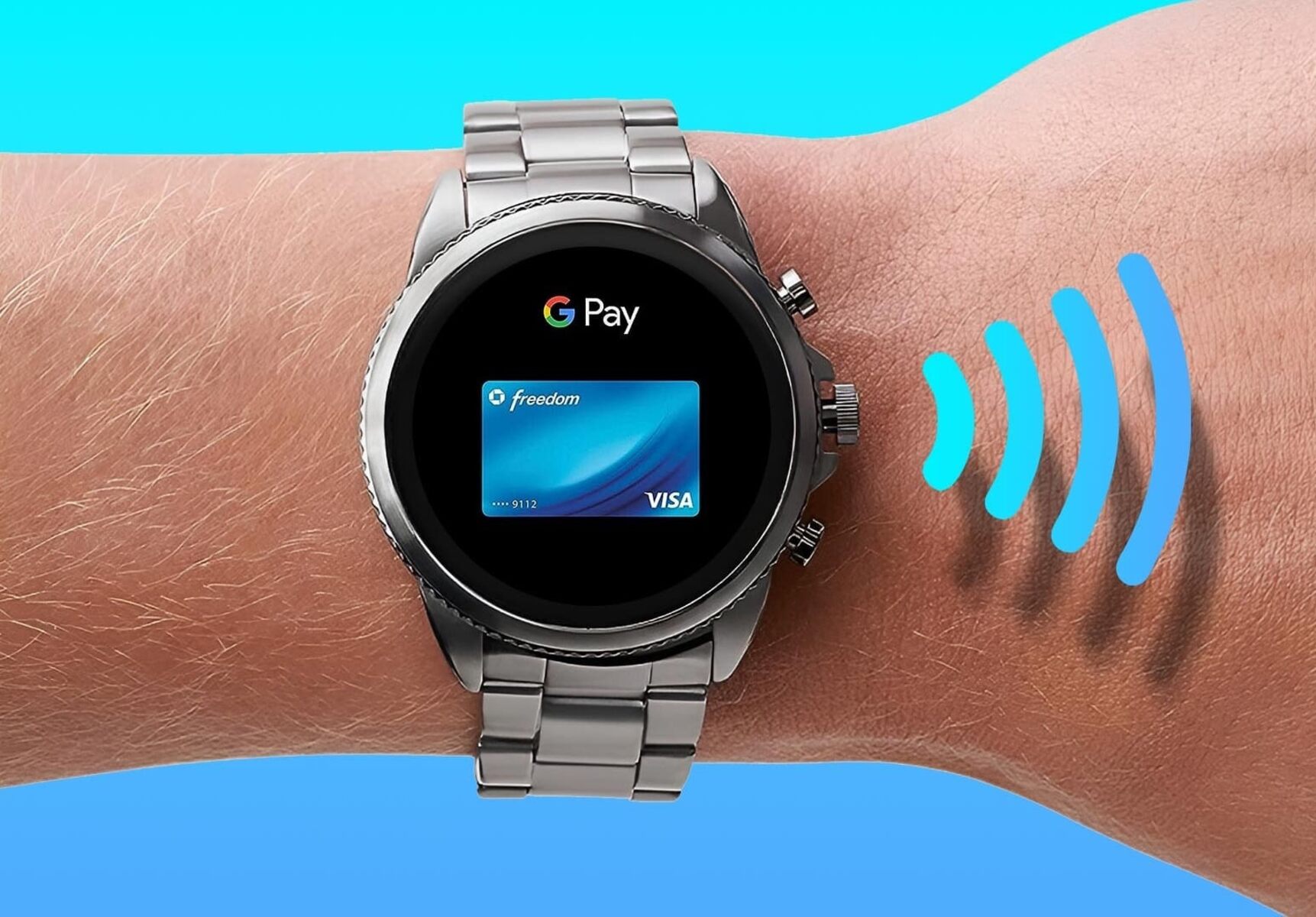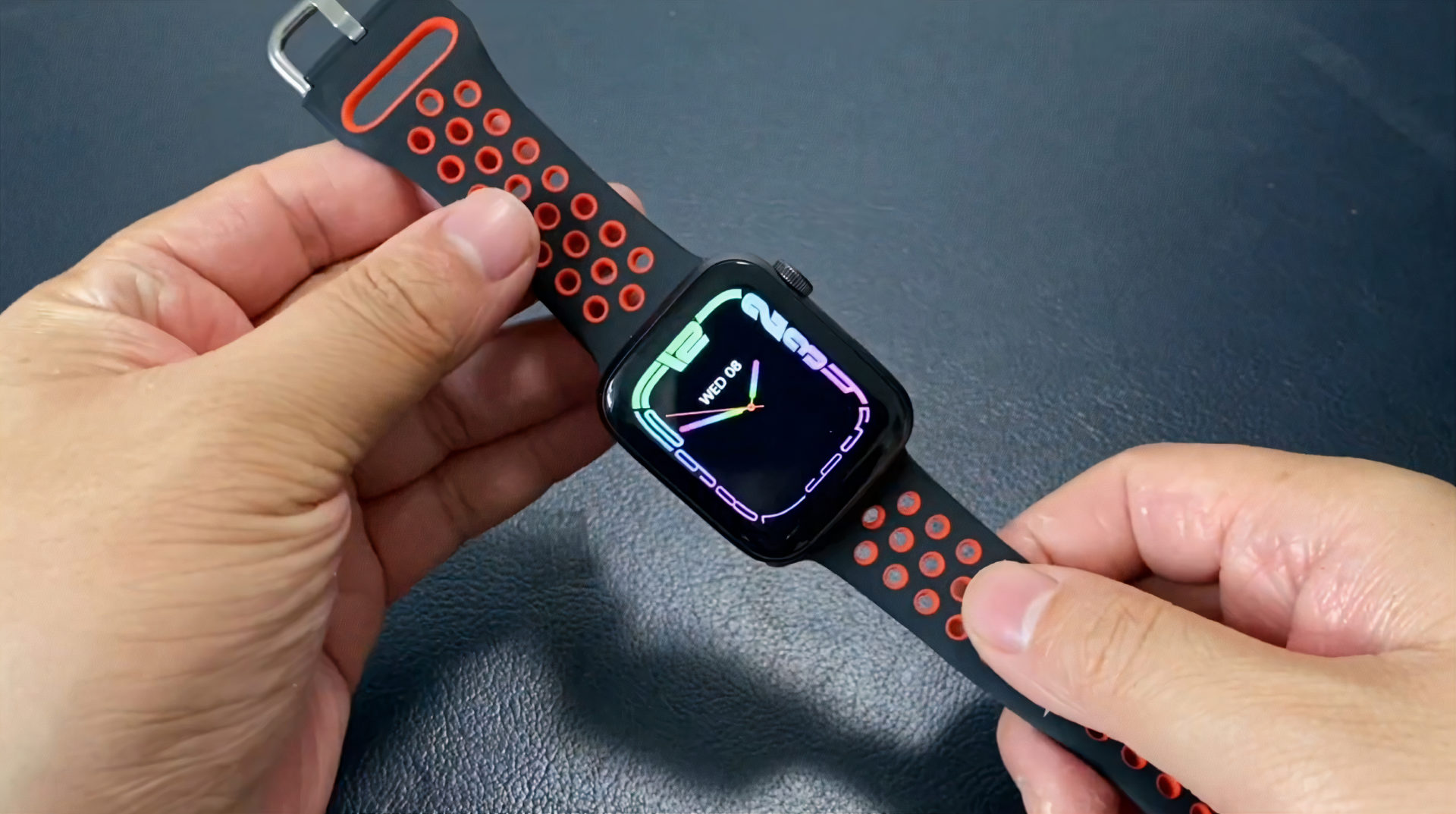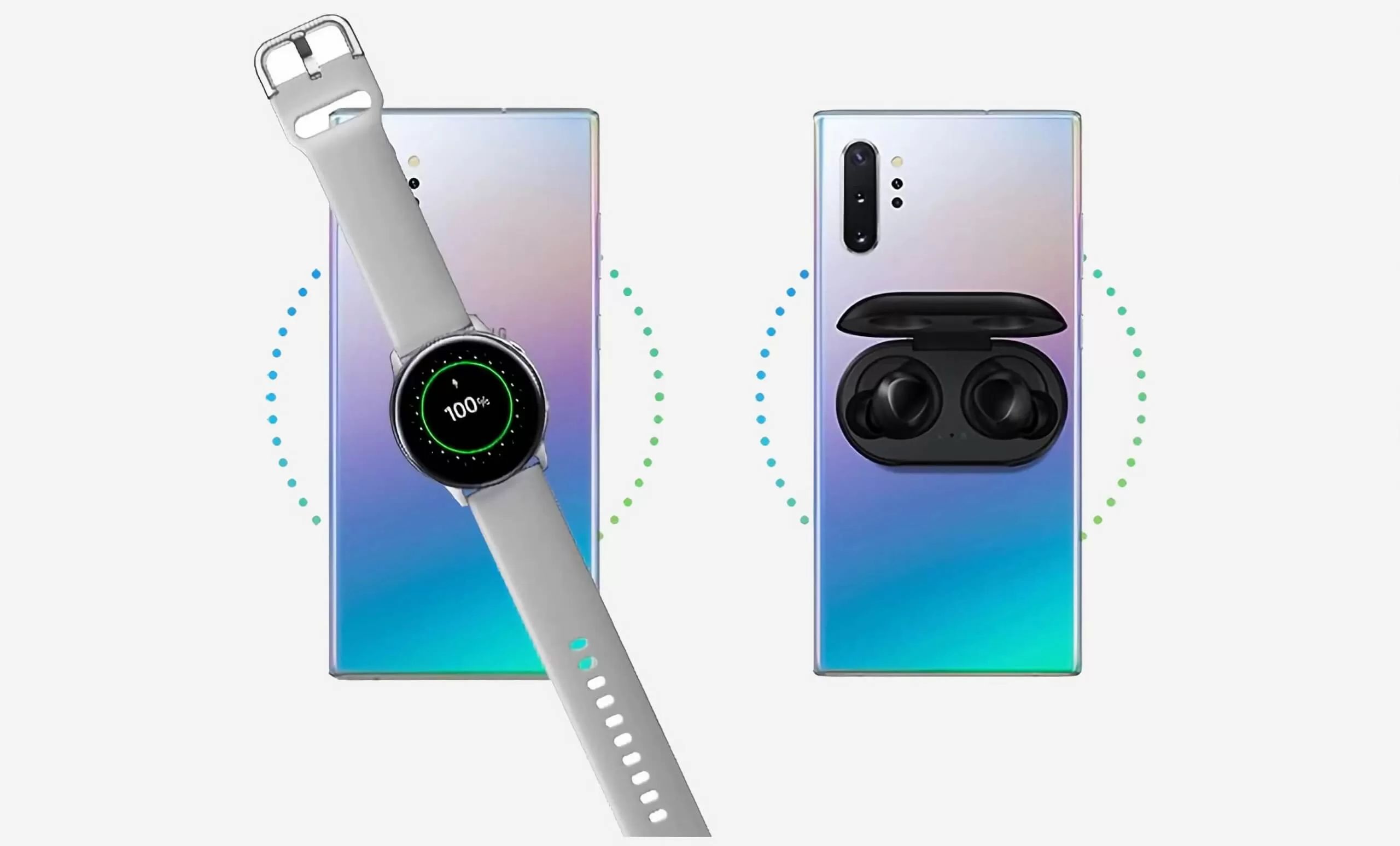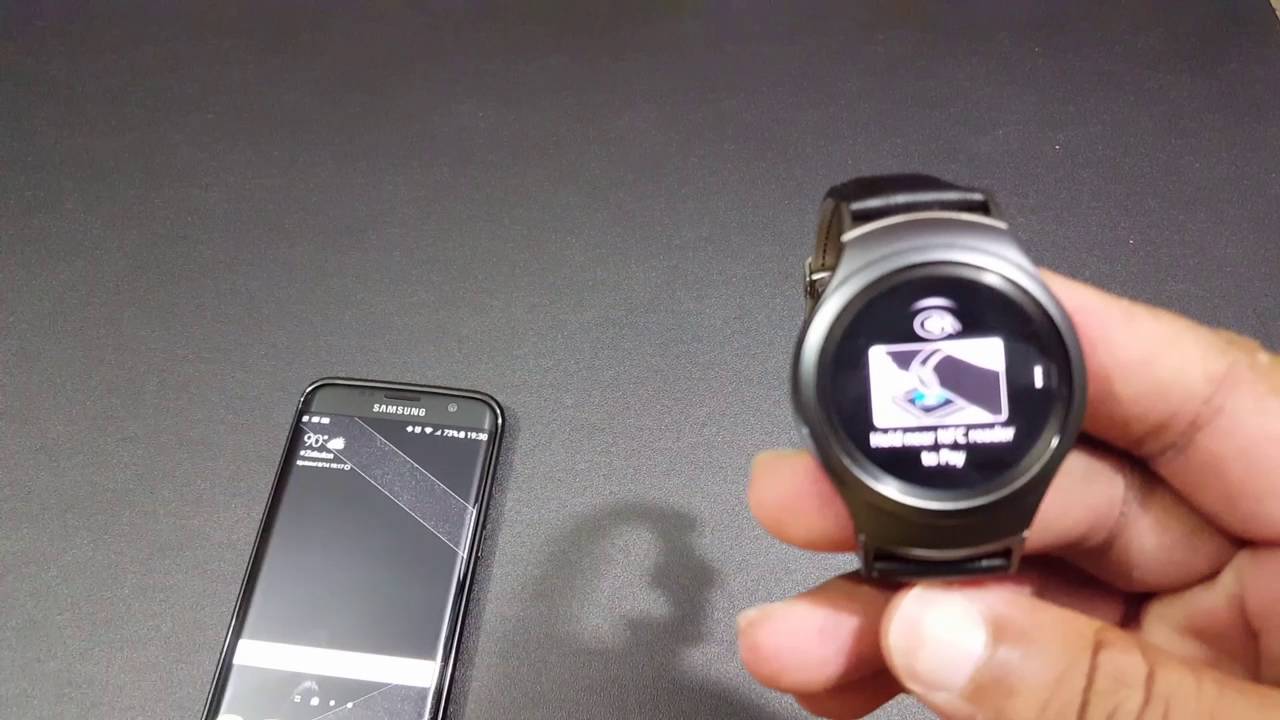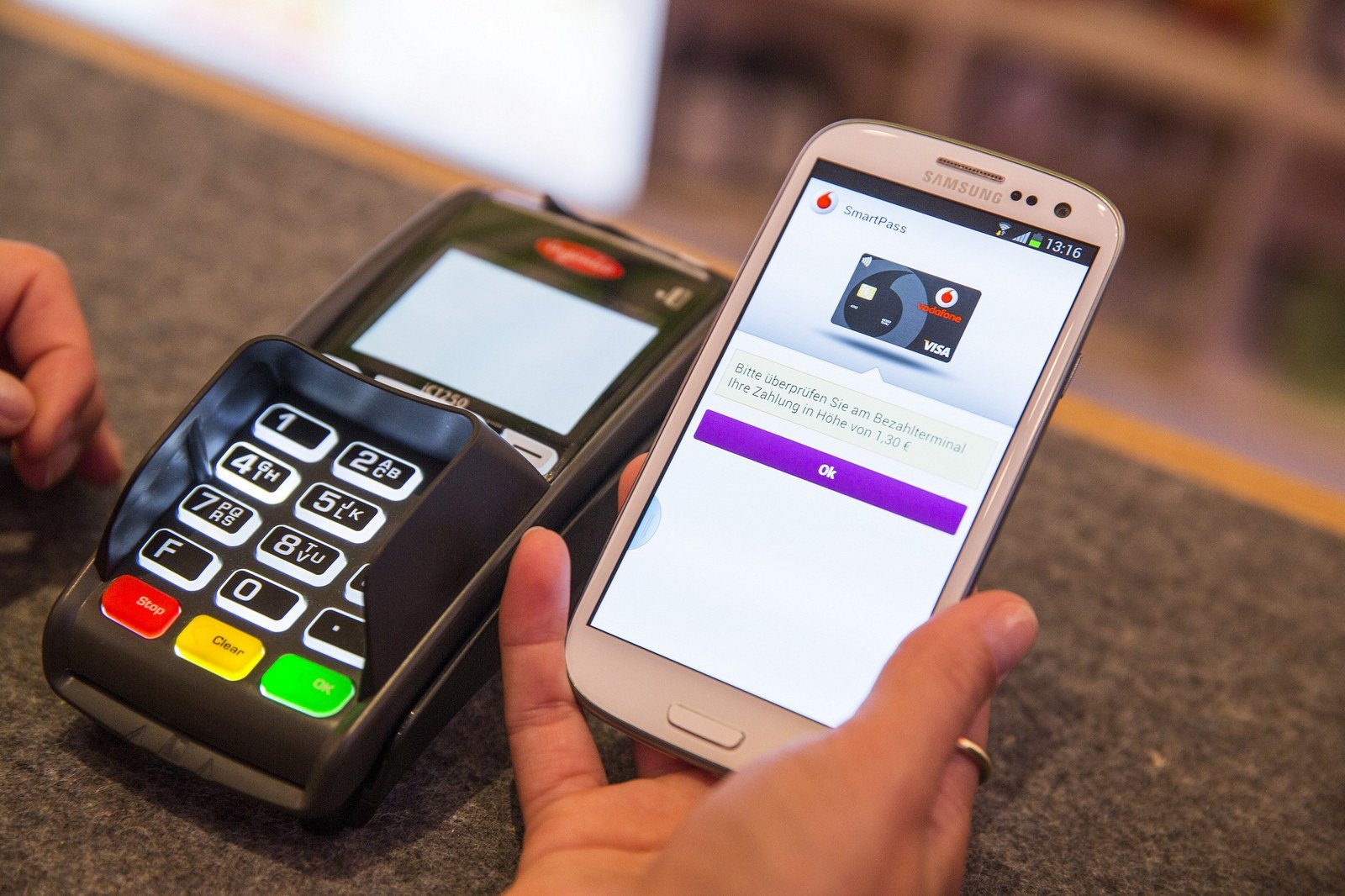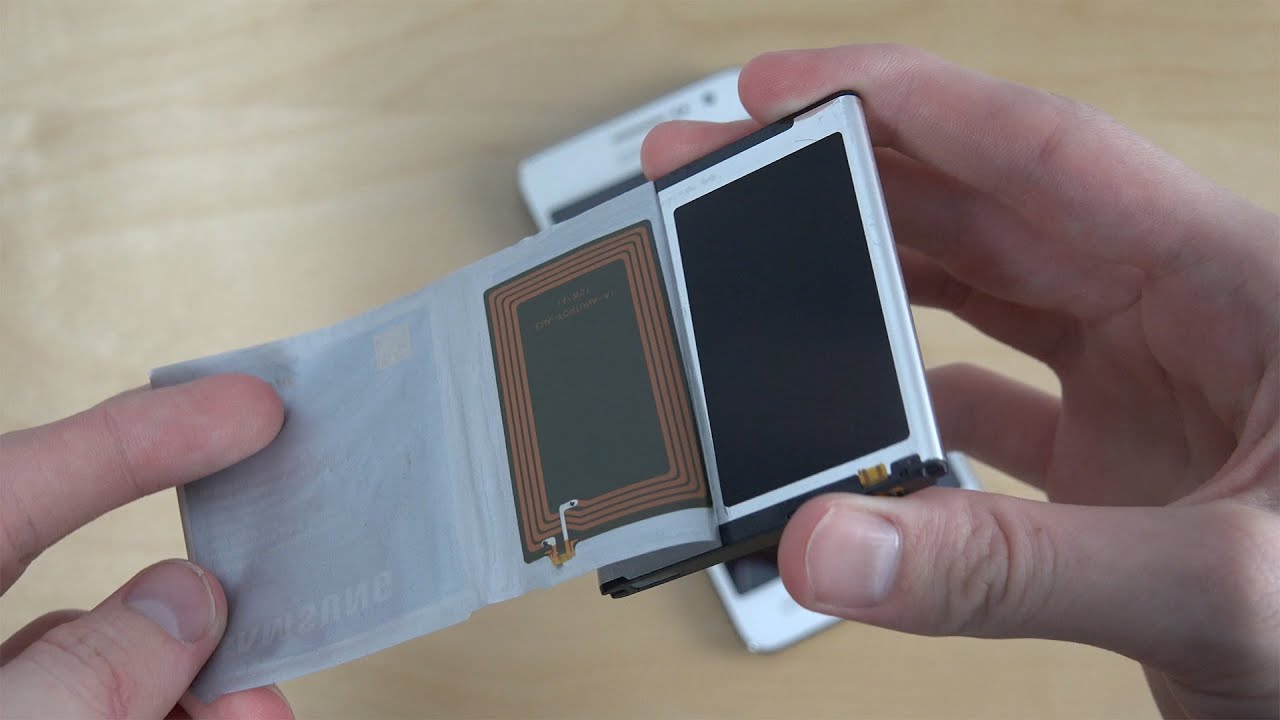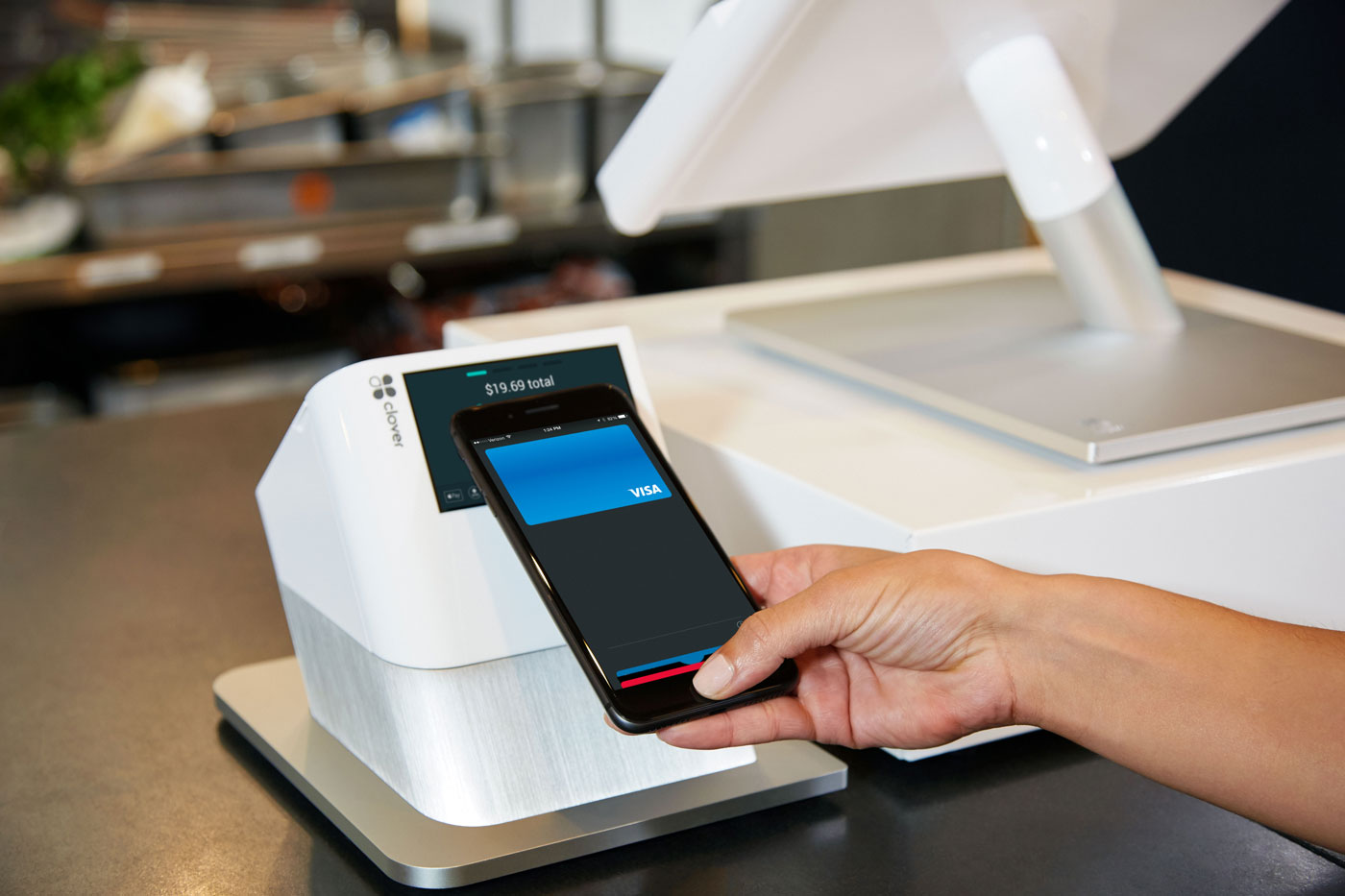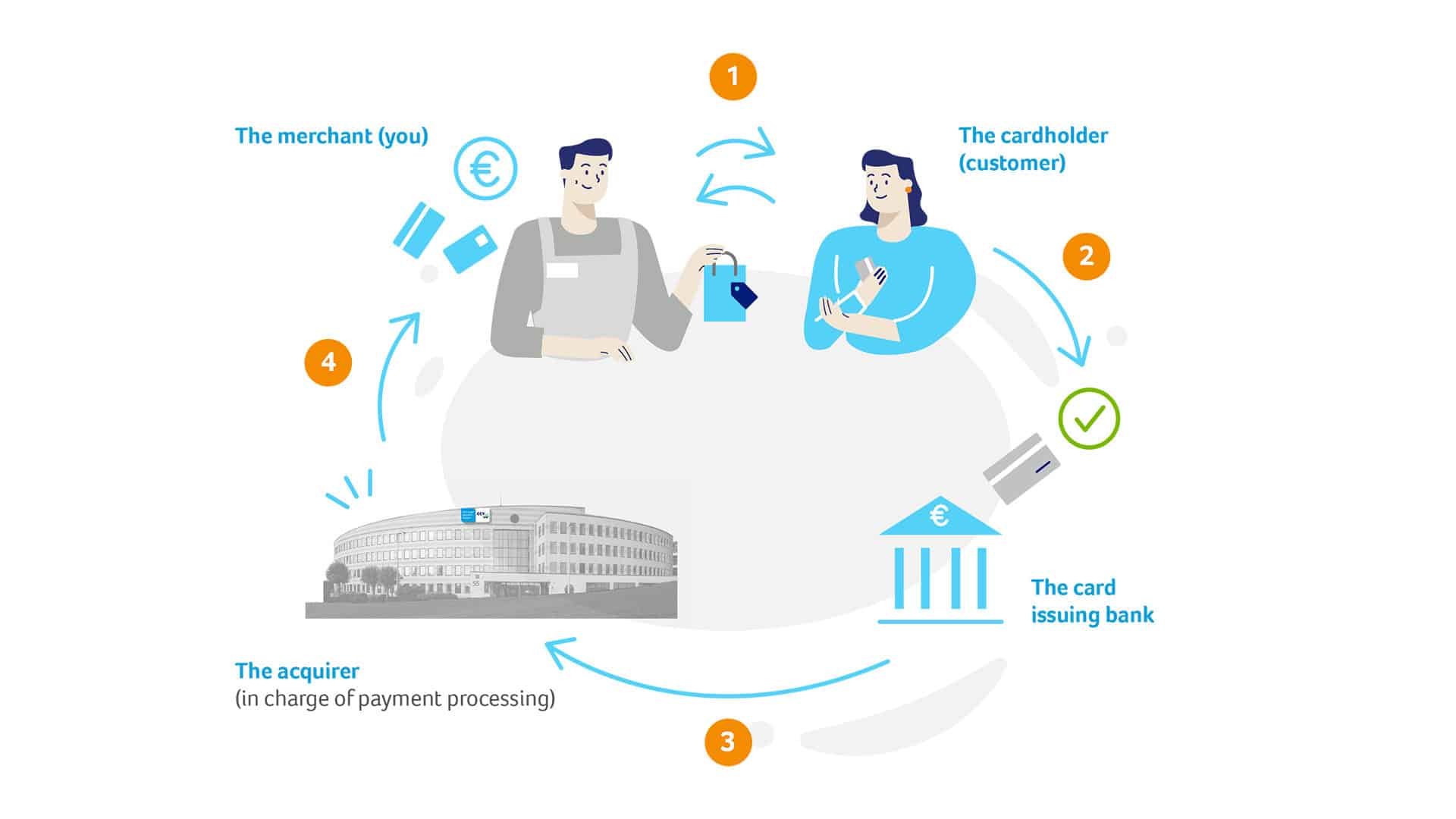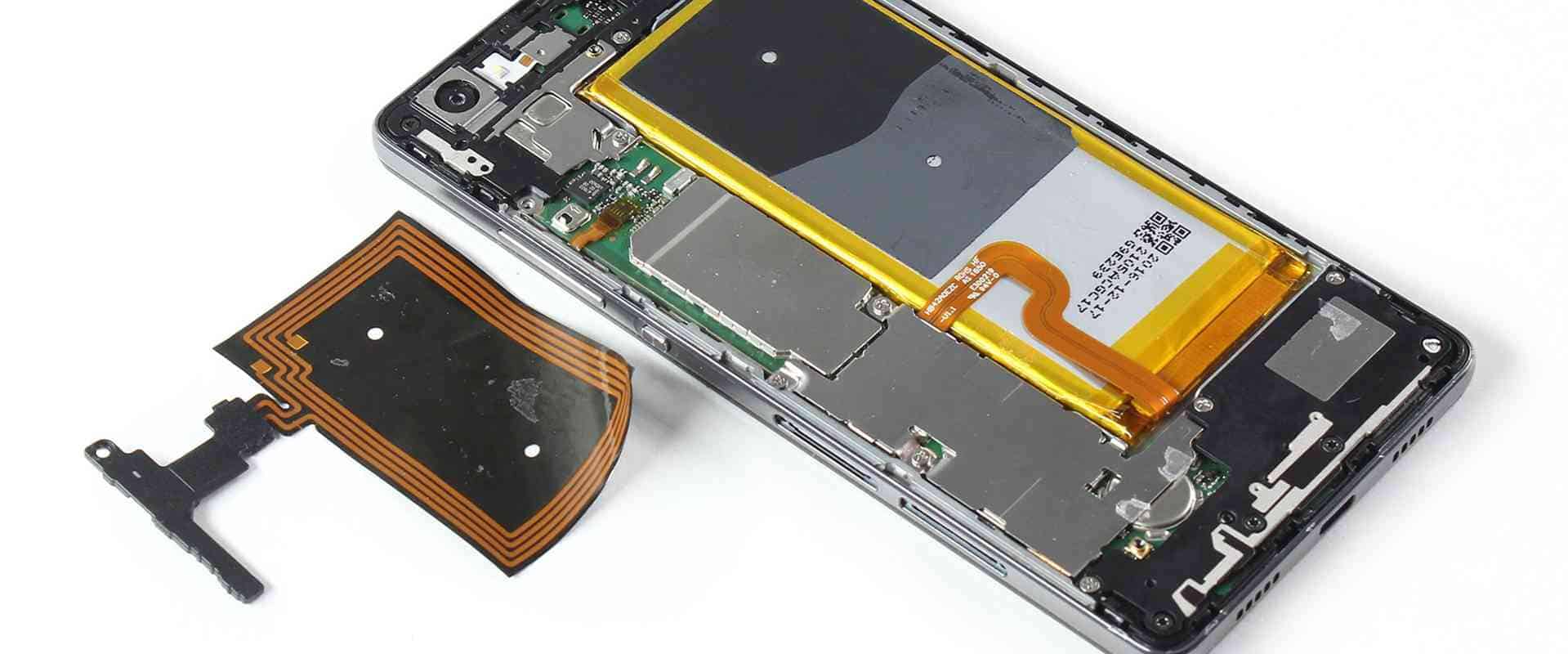Introduction
Near Field Communication (NFC) technology has revolutionized the way we interact with our devices, enabling seamless communication and data exchange over short distances. As smartwatches continue to gain popularity and functionality, the integration of NFC technology has opened up a myriad of possibilities, enhancing user experiences and expanding the capabilities of these wearable devices.
The convergence of NFC and smartwatches represents a significant leap forward in the realm of wearable technology, offering users a convenient and efficient means of accessing, sharing, and transferring data with a simple tap or wave. This article delves into the realm of NFC on smartwatches, exploring the technology's underlying principles, its practical applications, and the potential impact it holds for the future.
The utilization of NFC on smartwatches has the potential to redefine the way we interact with our surroundings, bridging the gap between physical and digital realms. From contactless payments to seamless connectivity with other NFC-enabled devices, the integration of this technology empowers users with newfound convenience and efficiency. As we delve deeper into the intricacies of NFC on smartwatches, it becomes evident that this amalgamation of technologies has the power to reshape our daily routines and streamline our interactions with the world around us.
The integration of NFC on smartwatches represents a pivotal advancement in the evolution of wearable technology, propelling these devices beyond mere accessories and transforming them into indispensable tools for modern living. By harnessing the capabilities of NFC, smartwatches are poised to become indispensable companions, seamlessly integrating into our daily lives and unlocking a wealth of possibilities at the touch of a button or a flick of the wrist.
What is Near Field Communication (NFC)?
Near Field Communication (NFC) is a short-range wireless communication technology that facilitates the exchange of data between devices in close proximity, typically within a few centimeters. Operating on the principles of electromagnetic induction, NFC enables seamless interaction between compatible devices, allowing for swift and secure data transfer without the need for complex setup procedures.
At its core, NFC relies on radio frequency identification (RFID) technology, allowing devices to communicate by bringing them into close proximity or simply tapping them together. This close-range communication ensures that NFC transactions are highly secure, as the physical proximity requirement acts as a natural barrier against unauthorized access.
The versatility of NFC extends beyond data exchange, encompassing a wide array of applications, including contactless payment systems, access control, information sharing, and device pairing. With its ability to operate in three distinct modes—reader/writer, peer-to-peer, and card emulation—NFC technology offers unparalleled flexibility, catering to diverse use cases and scenarios.
One of the defining features of NFC is its inherent compatibility with existing contactless card technologies, such as those used in public transportation systems and access control systems. This compatibility has facilitated the widespread adoption of NFC across various industries, paving the way for seamless integration with everyday devices, including smartphones, smartwatches, and point-of-sale terminals.
As NFC continues to gain traction in the realm of consumer electronics, its potential for simplifying everyday tasks and enhancing user experiences has become increasingly evident. The intuitive nature of NFC interactions, coupled with its robust security features, positions this technology as a cornerstone of modern connectivity, offering a bridge between the physical and digital worlds.
In essence, NFC serves as a conduit for frictionless communication and interaction, empowering users to effortlessly engage with their surroundings and streamline their digital interactions. As we delve deeper into the realm of NFC on smartwatches, it becomes imperative to grasp the underlying principles and capabilities of this transformative technology, laying the groundwork for an exploration of its integration with wearable devices.
How NFC Works on Smartwatches
When it comes to smartwatches, the integration of Near Field Communication (NFC) technology introduces a new dimension of functionality, enabling these wearable devices to seamlessly interact with a myriad of NFC-enabled peripherals and systems. At the core of this integration lies the ability of smartwatches to harness the power of NFC for contactless communication, data exchange, and transactional capabilities.
Smartwatches equipped with NFC capabilities are designed to leverage this technology for a diverse range of applications, with contactless payments being one of the most prominent use cases. By incorporating NFC-enabled payment solutions, smartwatches empower users to make secure transactions with a simple tap, eliminating the need to fumble for physical cards or cash. This streamlined approach to payments not only enhances convenience but also adds a layer of security, as sensitive financial data is transmitted in a secure manner.
Furthermore, NFC on smartwatches facilitates seamless connectivity with other NFC-enabled devices, such as smartphones, speakers, and wearable accessories. This interoperability opens up a world of possibilities, allowing users to effortlessly pair their smartwatches with compatible devices, share information, and initiate actions with a mere tap or wave. Whether it’s transferring contact information, initiating media playback, or triggering automated tasks, the integration of NFC amplifies the utility and connectivity of smartwatches.
From a technical standpoint, the operation of NFC on smartwatches involves the utilization of an embedded NFC chip, which communicates with external NFC readers or devices through radio frequency signals. This chip facilitates the exchange of data, enabling smartwatches to initiate transactions, exchange information, and interact with NFC-compatible infrastructure. The seamless nature of NFC transactions on smartwatches underscores the user-centric approach of this technology, simplifying complex processes into intuitive, user-friendly interactions.
As smartwatches continue to evolve, the integration of NFC technology is poised to unlock new possibilities, expanding the scope of interactions and transactions that can be facilitated through these wearable devices. By harnessing the power of NFC, smartwatches are not only enhancing their utility but also reshaping the way users engage with the digital and physical realms, blurring the lines between convenience and connectivity.
Benefits of NFC on Smartwatches
The integration of Near Field Communication (NFC) technology on smartwatches brings forth a multitude of benefits, amplifying the functionality and user experience of these wearable devices in diverse ways. From streamlined transactions to enhanced connectivity, the infusion of NFC capabilities empowers smartwatches with newfound versatility, convenience, and security.
One of the primary advantages of NFC on smartwatches is the facilitation of seamless and secure contactless payments. By leveraging NFC-enabled payment solutions, users can make transactions with a simple tap of their smartwatches, eliminating the need to carry physical cards or cash. This not only streamlines the payment process but also enhances security, as NFC transactions are encrypted and require close proximity for authentication, reducing the risk of unauthorized access.
Furthermore, NFC empowers smartwatch users to effortlessly pair their devices with compatible peripherals and accessories, such as Bluetooth speakers, headphones, and smartphones. This seamless connectivity simplifies the process of initiating interactions and sharing information, enhancing the overall user experience. Whether it’s transferring files, initiating media playback, or unlocking smart locks, the integration of NFC on smartwatches amplifies their utility and interoperability within the digital ecosystem.
Additionally, NFC-enabled smartwatches serve as versatile tools for accessing digital content and information in various contexts. From retrieving boarding passes at airports to accessing event tickets and loyalty cards, the convenience of having pertinent information readily available on the wrist enhances user convenience and reduces the reliance on physical documents. This not only streamlines the user experience but also contributes to a more sustainable and eco-friendly approach to managing digital assets.
Moreover, the integration of NFC on smartwatches paves the way for innovative use cases, such as health and fitness tracking. By leveraging NFC technology, smartwatches can interact with NFC-equipped exercise equipment, access secure facilities, or even enable contactless check-ins at healthcare facilities. This seamless integration with the healthcare and fitness ecosystem enhances the utility of smartwatches as comprehensive wellness companions, expanding their role beyond mere notification and communication devices.
As smartwatches continue to evolve, the benefits of NFC integration extend beyond individual use cases, contributing to a more connected, efficient, and secure digital lifestyle. The inherent versatility and security of NFC technology, when coupled with the inherent portability and accessibility of smartwatches, create a symbiotic relationship that amplifies the overall value proposition for users, positioning NFC-enabled smartwatches as indispensable tools for modern living.
Use Cases for NFC on Smartwatches
The integration of Near Field Communication (NFC) technology on smartwatches has ushered in a new era of functionality, expanding the scope of potential use cases and interactions that these wearable devices can facilitate. From contactless payments to seamless connectivity, the versatility of NFC on smartwatches extends across a spectrum of practical applications, enhancing user experiences and streamlining everyday interactions.
One of the most prevalent use cases for NFC on smartwatches revolves around contactless payments, offering users a convenient and secure method for completing transactions. Whether it’s making purchases at retail outlets, accessing public transportation systems, or initiating payments at point-of-sale terminals, NFC-enabled smartwatches empower users to streamline their financial interactions with a simple tap, eliminating the need to carry physical wallets or cards.
Beyond payments, NFC on smartwatches facilitates seamless connectivity with a myriad of NFC-enabled devices and infrastructure. This opens up a plethora of use cases, including the ability to pair with Bluetooth accessories, share information with smartphones, and interact with NFC-equipped smart home systems. By leveraging the power of NFC, smartwatches serve as central hubs for initiating actions and interactions, bridging the gap between the digital and physical realms.
Another compelling use case for NFC on smartwatches lies in the realm of digital access and authentication. From accessing secure facilities and workplaces to unlocking smart locks and entry systems, the inherent security and proximity-based authentication of NFC technology empower smartwatch users with seamless access control capabilities. This not only enhances convenience but also augments security measures by leveraging encrypted, proximity-based interactions.
Moreover, NFC-enabled smartwatches find utility in the domain of information and data retrieval, offering users quick and convenient access to digital assets. Whether it’s retrieving boarding passes, accessing event tickets, or managing loyalty cards, the integration of NFC streamlines the process of managing digital credentials and documents, reducing the reliance on physical copies and enhancing the overall user experience.
Furthermore, NFC on smartwatches extends its utility to the realm of health and fitness tracking, enabling interactions with NFC-equipped exercise equipment, access to secure healthcare facilities, and contactless check-ins at medical centers. This seamless integration with the healthcare ecosystem positions NFC-enabled smartwatches as comprehensive wellness companions, offering a holistic approach to managing health and fitness-related interactions.
As smartwatches continue to evolve and integrate NFC capabilities, the potential use cases for this technology are poised to expand further, offering users a myriad of opportunities to streamline interactions, enhance security, and amplify the overall utility of these wearable devices. The convergence of NFC and smartwatches represents a paradigm shift in the way users engage with their digital and physical environments, paving the way for a more connected, efficient, and secure lifestyle.
Security and Privacy Considerations
While the integration of Near Field Communication (NFC) technology on smartwatches unlocks a myriad of convenient and innovative capabilities, it also necessitates a thoughtful examination of security and privacy considerations to ensure the integrity of user interactions and data. As smartwatches become increasingly intertwined with NFC-based interactions, it becomes imperative to address the inherent security and privacy implications associated with this technology.
One of the primary security considerations pertains to the authentication and encryption of NFC transactions on smartwatches. Ensuring that NFC-enabled payments and interactions are safeguarded against unauthorized access and data interception is paramount. By leveraging robust encryption protocols and secure authentication mechanisms, smartwatches can mitigate the risk of fraudulent activities and unauthorized data access, bolstering user confidence in the security of NFC transactions.
Furthermore, the proximity-based nature of NFC interactions on smartwatches inherently reduces the risk of unauthorized access, as physical proximity is a prerequisite for initiating and completing NFC transactions. This natural barrier adds an extra layer of security, reducing the likelihood of remote interception or unauthorized data exchange, thereby enhancing the overall security posture of NFC-enabled smartwatches.
Privacy considerations also come to the forefront when examining the implications of NFC on smartwatches. As these devices facilitate seamless interactions and data exchange, it is essential to prioritize user privacy and data protection. Smartwatches must adhere to stringent privacy standards, ensuring that user data exchanged during NFC interactions is handled with the utmost confidentiality and complies with applicable data protection regulations.
Moreover, the integration of NFC on smartwatches necessitates clear and transparent user consent mechanisms, empowering individuals to control the scope of NFC interactions and the sharing of personal information. Providing users with granular control over NFC permissions and data sharing settings fosters a privacy-centric approach, instilling confidence in the responsible handling of sensitive information during NFC transactions.
As smartwatches continue to embrace NFC technology and its diverse applications, the onus lies on manufacturers and developers to prioritize security and privacy considerations throughout the design and implementation of NFC-enabled features. By adopting robust security measures, adhering to privacy best practices, and empowering users with transparent control over their NFC interactions, smartwatches can cultivate a secure and privacy-respecting ecosystem, bolstering user trust and confidence in the seamless capabilities offered by NFC technology.
Future of NFC on Smartwatches
The integration of Near Field Communication (NFC) technology on smartwatches has laid the foundation for a future brimming with innovative possibilities, as these wearable devices continue to evolve and embrace the transformative capabilities of NFC. Looking ahead, the convergence of NFC and smartwatches is poised to shape the trajectory of wearable technology, unlocking new dimensions of functionality, connectivity, and user experiences.
One of the key areas of growth for NFC on smartwatches lies in the realm of expanded use cases and interactions. As smartwatches become more deeply ingrained in the fabric of daily life, the integration of NFC technology will catalyze the development of novel applications, ranging from enhanced health and wellness functionalities to seamless integration with smart home ecosystems. The future holds the promise of leveraging NFC to streamline interactions across various domains, empowering smartwatches to serve as central hubs for diverse digital interactions.
Furthermore, the evolution of NFC on smartwatches is expected to foster deeper integration with Internet of Things (IoT) ecosystems, enabling these devices to seamlessly communicate with a myriad of connected peripherals, appliances, and infrastructure. This convergence of NFC-enabled smartwatches with IoT environments holds the potential to create cohesive, interconnected ecosystems, where user interactions and transactions are seamlessly orchestrated through the power of NFC technology.
Security and authentication capabilities are also poised to advance in tandem with the evolution of NFC on smartwatches. The integration of advanced biometric authentication methods, coupled with robust encryption protocols, will fortify the security posture of NFC transactions, instilling greater confidence in the integrity and privacy of user interactions. As smartwatches become increasingly relied upon for sensitive transactions and access control, the future of NFC will see a concerted focus on elevating security measures to meet the evolving threat landscape.
Moreover, the future of NFC on smartwatches holds the promise of enhanced interoperability and standardization, fostering seamless connectivity and interaction with a diverse array of NFC-enabled devices and infrastructure. This interoperability will pave the way for a more cohesive and integrated digital ecosystem, where smartwatches serve as versatile conduits for initiating actions, sharing information, and facilitating transactions across a spectrum of contexts.
As smartwatches continue to evolve and embrace the potential of NFC technology, the future holds a tapestry of opportunities for enhancing user experiences, expanding use cases, and redefining the role of wearable devices in the digital landscape. By harnessing the transformative capabilities of NFC, smartwatches are poised to become indispensable companions, seamlessly integrating into the fabric of modern living and unlocking a world of possibilities at the tap of a wrist.







